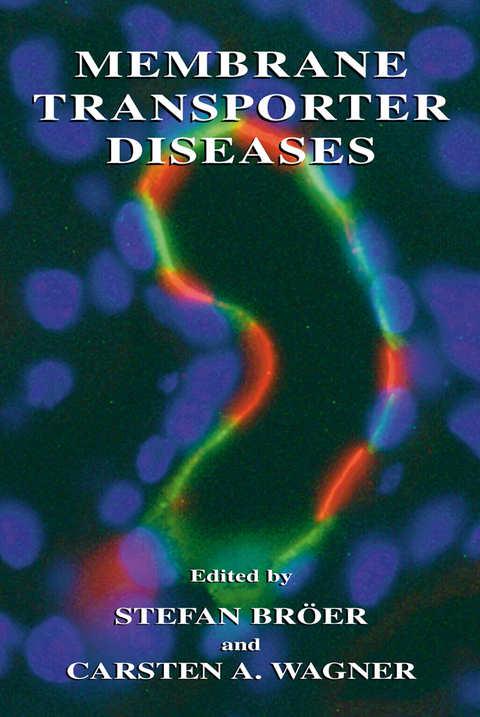
Membrane Transporter Diseases
Springer-Verlag New York Inc.
978-1-4613-4761-3 (ISBN)
1. Introduction to membrane transport Stefan Bröer and Carsten A. Wagner.- Renal Transport of Electrolytes and Acid-Base Equivalents.- 2. Introduction.- 3. Diseases of mutations in the SLC4A1/AE1 (band 3) Cl?/HCO3? exchanger.- 4 Electrogenic Na+/HCO3? cotransporter NBCl (SLC4A4): proximal renal tubular acidosis and ocular pathologies.- Transporters of Trace Elements and Biominerals.- 5. Introduction.- 6. Anion exchangers DTDST (SLC26A2), DRA (SLC26A3), and Pendrin (SLC26A4).- 7. Divalent metal transporter DMT1 (SLC11A2).- 8. Iron transporter ferroportin FPN1 Antonello Pietrangelo.- Transporters of Energy Metabolites and Building Blocks.- 9. Introduction.- 10. Aspartate glutamate carrier (citrin) deficiency.- 11. The OCTN2 carnitine transporter and fatty acid oxidation.- 12. The facilitative glucose transporter 2: pathophysiological role in mouse and human.- 13. Glucose-6-phosphate transporter: the key to glycogen storage disease type Ib.- 14. Heteromeric amino acid transporters: cystinuria and lysinuric protein intolerance.- 15. Lysosomalsialic acid transporter sialin (SLC17A5): sialic acid storage disease (SASD).- 16. Thiamine-responsive megaloblastic anemia (TRMA) syndrome: consequences of defective high-affinity thiamine transport.- ABC Transporters.- 17. Introduction Stefan Bröer, Wolfgang E. Kaminski, and Gerd Schmitz.- 18. Canalicular multispecific organic anion transporterABCC2.- 19. Phospholipid transporters ABC1 and ABCA7.- 20. The role of ABCR(ABCA4) in photoreceptor cells and Stargardt macular degeneration.- 21. Function of the transporter associated with antigen processing (TAP) in cellular immunity, tumor escape, and virus persistence.- Transporters Involved in Signal Transduction.- 22. Introduction.- 23. Molecular genetics of transporters fornorepinephrine, dopamine, and serotoninin behavioral traits and complex diseases.- 24. Inherited disorders of Ca2+-ATPases.
| Zusatzinfo | XIII, 390 p. |
|---|---|
| Verlagsort | New York, NY |
| Sprache | englisch |
| Maße | 178 x 254 mm |
| Themenwelt | Sachbuch/Ratgeber ► Natur / Technik ► Natur / Ökologie |
| Medizin / Pharmazie ► Gesundheitsfachberufe ► Diätassistenz / Ernährungsberatung | |
| Medizin / Pharmazie ► Medizinische Fachgebiete ► Neurologie | |
| Medizin / Pharmazie ► Medizinische Fachgebiete ► Pharmakologie / Pharmakotherapie | |
| Naturwissenschaften ► Biologie ► Biochemie | |
| Naturwissenschaften ► Biologie ► Ökologie / Naturschutz | |
| Naturwissenschaften ► Biologie ► Zoologie | |
| Weitere Fachgebiete ► Land- / Forstwirtschaft / Fischerei | |
| ISBN-10 | 1-4613-4761-0 / 1461347610 |
| ISBN-13 | 978-1-4613-4761-3 / 9781461347613 |
| Zustand | Neuware |
| Haben Sie eine Frage zum Produkt? |
aus dem Bereich


